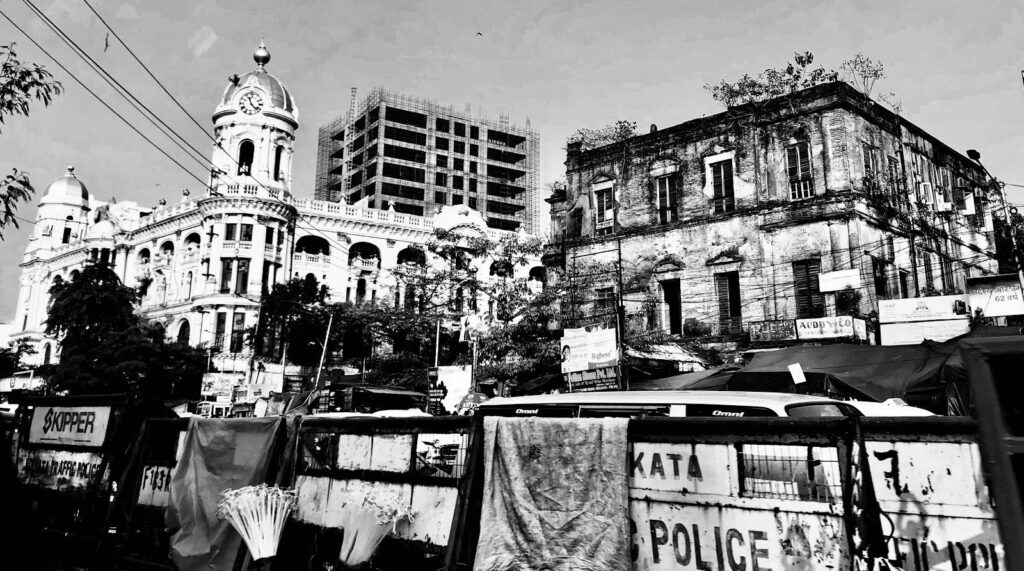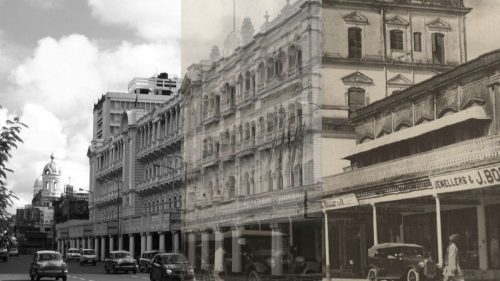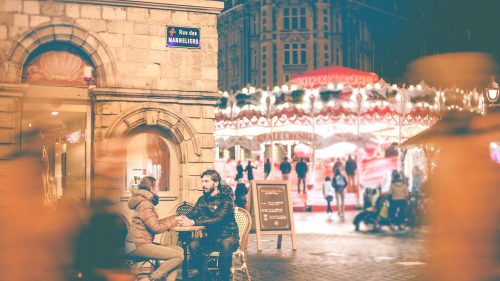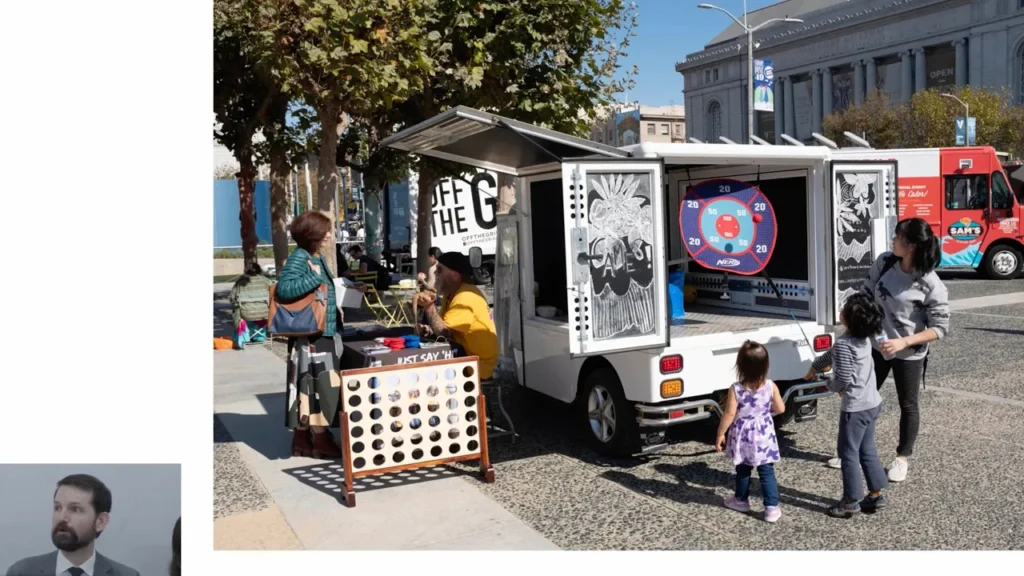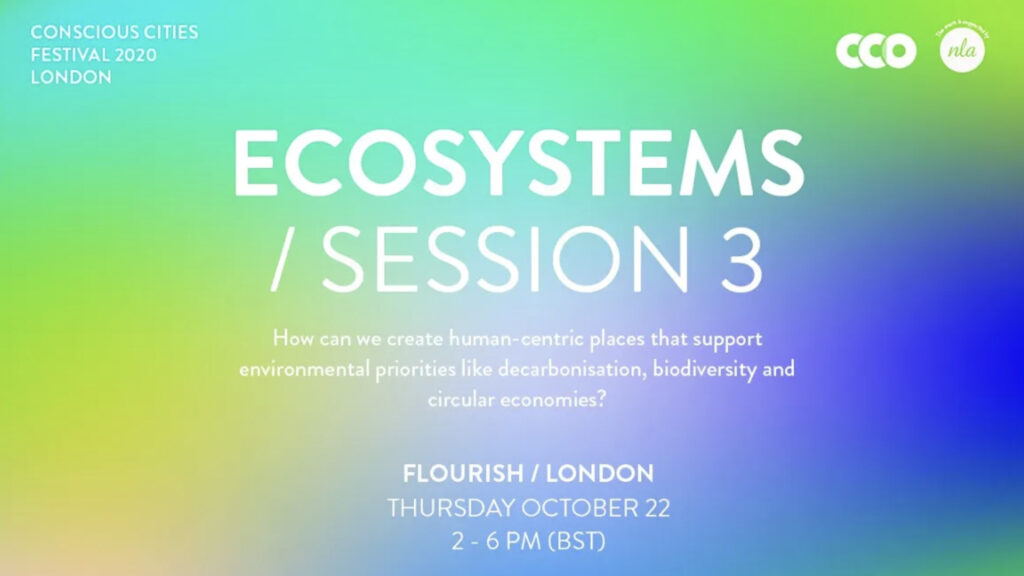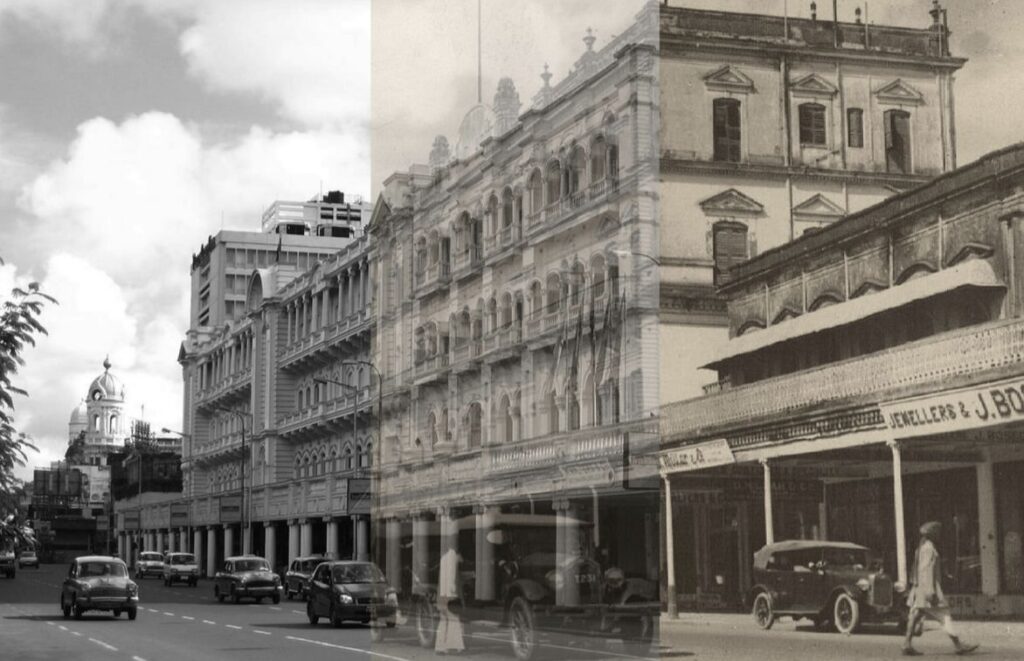
The conscious cities movement asks us to consider how, despite the contemporary complexities of the urban, we can work towards making a positive impact on people’s lives through the field of design. Much of the work that is being done grapples with the concept of what we build next but, might we consider how to achieve this same impact by engaging with what is already built? Are there ways for us to create healthier, more inclusive, and democratic built environments by reevaluating what is already around us (and has been for years)? In the following article, I will guide you to reconsider our methods of facilitating environments that are aware and responsive to community needs: not through what we build but rather what we save (or what we don’t), and how. To begin, instead of contextualizing these questions within the “West” (as many scholarly conversations continue to do), I would like us to consider an “Eastern” city that, although historically subsumed in the Western orbit, is struggling in its relatively newly independent status to navigate the conflict between celebrating history and embracing modernity: Kolkata.
Kolkata, the capital of West Bengal and one of India’s major metropolises, was, for more than two centuries, the power center of the colonized Indian nation, originating from the fusion of three modest villages and growing into a fortified trading post at the hands of the British East India Company. As a hub for international commerce, Calcutta (as referred to in colonial nomenclature), was historically very diverse, housing Armenian, Portuguese, Syrian, Dutch, French and British traders alongside local Bengali farmers, business men, and intellectual elites.
With this varied community, we might expect the region’s recognized monuments to reflect the city’s both structural and cultural diversity. However, the present lists kept by the Archaeological Survey of India (ASI), the government agency now responsible since the 19th century for national preservation, only officially recognizes institutional and religious buildings affiliated with the British colonial project, ignoring Bengali vernacular typologies (residential, institutional, or religious).
Due to this disparity, a grassroots preservation movement has sparked in Kolkata. One subset of this movement focuses on old Bengali bungalows, also referred to as “heritage homes,” clustered predominantly in the North of the city. These bungalows (the terminology stemming from the Hindi word bangala meaning ‘of Bengal’, ‘in the Bengal style’, or belonging to a Bengali) are larger multi-family properties originally developed in the Bengal region. The normal custom for a bungalow, as recognized internationally, is one storey, but many wealthy Bengali families built these structures up and out to accommodate living spaces for multiple generations of extended family members and live-in servants as well as spaces for live entertainment, pujos (religious festivals), and community gatherings. Although collectively referred to as bungalows, this vernacular architecture can be broken down into three different varieties, rajbaris, bonedi baris and zamindar baris. While a rajbaris housed royalty, bonedi baris were homes of the founding families of Bengal and Zamindar baris were the homes of affluent landlords. Despite the vital role that these different homes played as the site for socio-cultural exchange in the Bengali community, they remain deprived of the status of validation that comes from being supported and preserved by the government.
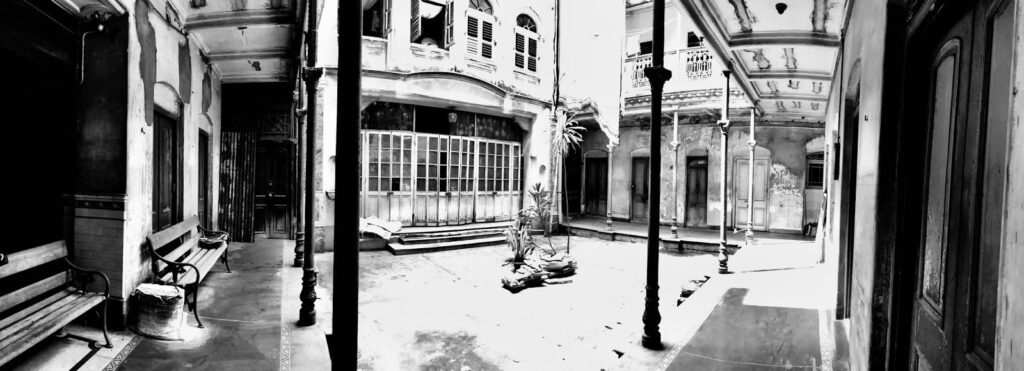
So, what does this schism in the preservation system mean? Why are these older, more inherently “Bengali” structures not being recognized or acknowledged as culturally valuable? I hypothesize that this typology in particular poses an interesting case for debate because their livelihood is inherently based on the concept of shared family living, particularly multi-generational, which is not as common a practice in Kolkata as it used to be. Previously one of these homes might have been inherited by a husband and wife who then raised five sons, each of whom marry a wife and have children that live in the home and intend to raise and live with their grandchildren under the same roof. Now a days, the younger generation may travel around the country or overseas for educational or job opportunities, opting to separate into nuclear families. Additionally, if and when they return to Kolkata, they may prefer to live in one of the many high rise apartments with modern facilities and air-conditioning that are emerging across the city instead of back into their family home. Thus, economists and developers may ask, what “revenue” would these bungalows bring to us if they were preserved? How does it matter if they are architecturally or aesthetically “protected” if they are, quite literally, devoid of the lives and lifestyle that they used to retain?
Instead of jumping to the conclusion that the developers, economists, and politicians in Kolkata are doing a disservice to the city and its history by refusing to recognize and preserve these bungalows, like many pro-preservationists do, I encourage us as scholars, history enthusiasts and global citizens to question the inherent importance that the institution of preservation holds and the power that it bestows both upon the space being preserved and those who control it. Is “preservation,” as it is contemporarily practiced, holding our environment within a state of post-mortem? Is it neglecting the dynamism and vibrancy of the activities that have developed (and continue to develop) organically as surrounding cultures and societies shift? Are these spaces now circumscribed and static, to the extent that they are unable to follow these socio-cultural shifts? Does preservation actually embalm the environment?
In order to begin to answer this question, I believe we must first shift our societal understanding of sense of place. This is a concept on which we place significant value, because of its ability to comfort us by strengthening our memories of and associations with particular places in our past. I do not intend to devalue sense of place or claim that it should not be used to help us develop place-based associations that make us “who we are” but I find it crucial that we acknowledge how it is often abused as a mechanism to embody and elevate particular identity groups over others (through institutional practices such as preservation). Although this topic is widely discussed across multiple academic disciplines, I turn here to sociologist and geographer Doreen Massey whose work challenges the conventional understanding of “place” as more than just a physical or ecological but a cultural and ideological environment. In her article, A Global Sense of Place, Massey speaks to the increasing societal uncertainty of what a place is and how we relate to it by asking us, in the face of movement and intermixing, how can we retain any sense of place and particularity? She argues that place itself and our seeking after sense of place has come to be seen as less a desire for knowledge of place, and more a desire to create place. This most commonly occurs because of a longing for some type of ideological cohesion which often stems from a defensive reactionary response to shifting patterns of power, culture, and identity that urban spaces continuously cycle through over many lifetimes. If we are able to define a place as “our place” then we can claim our validity and belonging through the fundamental rejection of newcomers and outsiders, whether this manifests through reactionary nationalism, competitive localism, or obsessions with “heritage” — as we see most vividly in preservation.
If we think of spaces as we do of people, then why wouldn’t we recognize multiplicity of identities and inter/intra relations? Massey emphasizes this problematical sense of place and asserts that places do not have single, essential identities, thus our search for “place” should not focus on definiteness but rather on evolution and dynamism. To put it rudimentarily, Massey states that a conventional sense of place, as most commonly practiced and observed by human society, relies on the practice of imparting distinguishable boundaries between inside and outside, us and them, here and there, then and now. It is in these dichotomies that I place the institution of preservation as inherently problematic, because it is the practice of preservation that fossilizes these bounded “places” and holds them in stasis, despite how the cultural, societal, political, economic environment around them has continued to change.
So, if we follow this critique of what “place” really is, we must reconsider what, why and at the hands of whom do we preserve. In Masseyian terms, identity, as a subset and consequence of place, has always been and will always be in the process of formation, forever unachieved, due to the fact that it constantly follows the movement of culture. So, the act of preserving it, and its spatial manifestations (whether at the building, neighborhood, district, or city level), is actually causing more harm than good because it goes against the inherent nature of dynamism that we now know to be true. Why would we keep our architectural environments oriented towards the past when our cultural and societal environments race towards the future?
I do not wish to claim to have the answers to these questions, but I hold a deep curiosity about them. I acknowledge the complexity of storytelling and past-present-future connection that comes with the practice of preservation, so I’ll return to the topic of the bungalows of Kolkata. What does it tell us that most of the bungalows that still stand are those that have been adopted, inherited or secured by entrepreneurial preservation enthusiasts, private agencies or wealthy families who can afford to pay the increasingly steep price to uphold the renovation of these older building, despite the region’s rampant humidity and naturally detrimental weather patterns. What does it mean to preserve these bungalows if the population that gave them meaning is no longer there? Are we really protecting their survival if we keep them as skeletons, as symbols of what once was but what will most likely never be again, given the trajectory of modernity and urban society? On the other hand, could it be that the few colonial, institutional buildings that are being recognized by the ASI, instead of these bungalows, are better candidates for preservation because the governmental activity within them was passed over from British rule to the Bengal government? Has their hegemonic significance withstood the test of time?
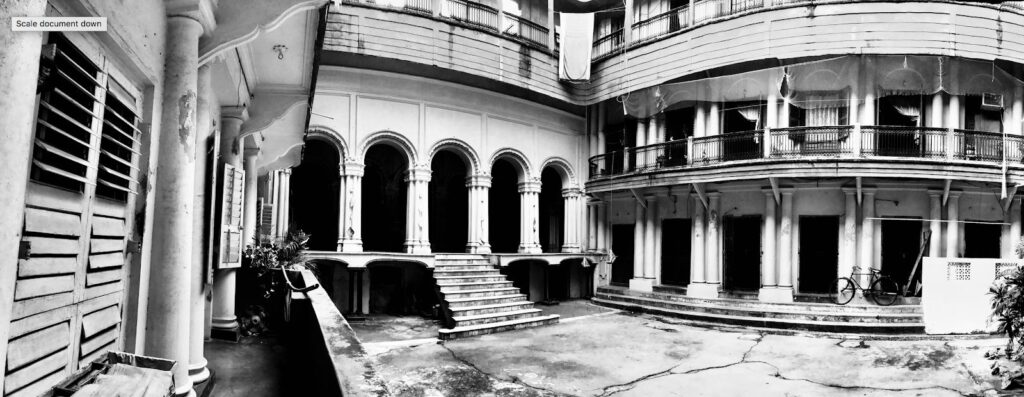
I feel that the “urban nostalgists” that I’ve seen fight so hard to keep these bungalows standing, are unconsciously contributing to the process of structural petrification, confining these bungalows as static interpretations of a time passed. What I fear they have not yet realized is that the struggle lies not in the structural wellbeing of the building but rather in the cultural attitudes of the people who live in and around them. They may be able to keep a bungalow from crumbling but they are unlikely to be able to convince the surrounding community that “bungalow lifestyles” are still relevant to Bengali society. Thus, the adaptation and renovation of these bungalows may not necessarily be about a loss of history, in its built form, but rather an evolution of cultural practices and priorities and the ways that they appropriate those forms.
Despite all of this, why is the push for preservation still so rampant? I think this speaks to the societal fear of uncertainty that drives humans to do whatever it takes to know exactly what has happened to them in the past and therefore, by projection, what will happen to them in the future. We find just as much comfort in looking back to a familiar and reassuring landscape as we can in predicting the intricacies of future innovation because knowing the past and projecting it into the future saves us from the terrifying unknown. The sad irony is that we might be better off learning to be comfortable with the concept of the unknown because all we have is the “here and now.” As long as people in power in cities like Kolkata obsess over trying to simultaneously reconstruct and give permanence to the past and propel forward into a more materially ephemeral future, then our understanding of Kolkata in the “now” ceases to exist, leaving us in limbo.
So how is this critique relevant to the improvement of architectural and urban design practices as more human-centered? I see it as directly correlated because it is through conflicting instruments and ideologies of power, in this case preservation, that Kolkata is experiencing an irreparable loss of a diverse Kolkata-Bengali culture and identity. However, it is not the failure to preserve that is causing this loss but rather the efforts to elevate static architecture over dynamic culture that undermine Kolkata’s move into the future. Preservation, at its core, has created and perpetuated tension and conflict over urban identity, under the misconstrued guise of “sense of place,” by retaining a singular “place” and the community associated with it, but removing the life from the place; and what is a place without life? Preservation has also allowed varying institutions affiliated with the “heritage” hierarchy, governed by their own ideologies of meaning, to utilize historic preservation as a mechanism to maintain their power within the city. Thus, as an institution, preservation has maintained not history, but rather systematic oppression.
To conclude, in what I might consider a “call for action” on the future of historic preservation as an institution, practice, and method of knowledge transfer, I think that preservation can develop into a mechanism of “design” that positively impacts society, only once it shifts away from focusing solely on the built and equally prioritizes and considers the living. If we are to ignore the living, then I fear that the act of preservation will never rise to be a truly humane activity because it will continue to exclude and privilege one group of people over another. The acceptance of the ideologies of inequality on which the field of preservation was founded are encouraging practitioners to freeze, and subsequently kill, the culture associated with the space that they are preserving, instead of reviving it; thus we require a paradigm shift of both the ideology and practice of preservation, moving forward.
So, are there ways to keep Bengali bungalows as part of society without keeping them as symbols of inequality? Could we turn them into schools for the children living in the surrounding lower income neighborhoods? Could we turn them into studios and residences for local artists who are also struggling to keep Bengali culture alive? Could they become interactive museums that showcase how Bengali society has evolved over time? Though this is just one particular case, these fundamental questions can and should be applied across the global context to other cities that are struggling with the same debates. Is there a way for global societies to rethink the value we have placed on preservation by reevaluating their sense of place? Can we learn to understand our sense of place as progressive; not self-closing and defensive, but outward-looking?
Most importantly, can we still be proud of our histories without preventing the spaces within which those histories occurred from developing into spaces for a new history to be made? I believe that the way to “make a positive impact on people’s lives” lies in the answers to these questions and I call you all to join me as I try to figure it out.
